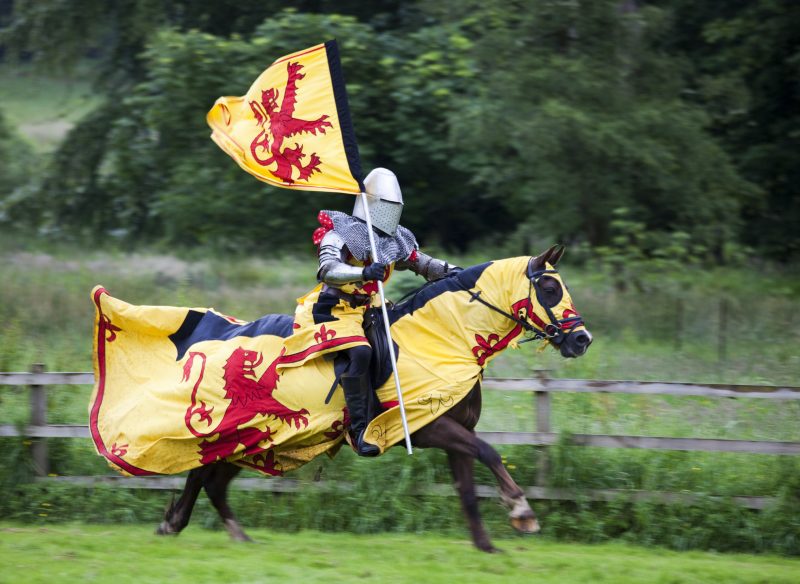The Scottish took full advantage of this situation. By the end of the year they had retaken almost all of their land and even raided into northern England.
Scotland has a long and proud history of defying the most powerful military forces in history to maintain its independence. The Scots and their ancestors resisted Rome, Norway, and England for well over a millennium. However Scotland realized that at times she could not stand alone, particularly against her powerful southern neighbor.
The natural solution was to look for alliances with other nations that opposed the English. The Scottish found an ideal ally in England’s other age-old rival, France. An alliance originally forged out of desperation would eventually lead to an amicable relationship and centuries of fighting alongside each other.
Succession Crisis and English Intervention
In 1290 Scotland was in a crisis. The previous monarch, King Alexander III, had no surviving children. His last legitimate heir, his seven year-old granddaughter Margaret, Maid of Norway, died of illness while traveling from Norway to Scotland to be crowned. The kingdom was thrown into chaos as no less than 14 pretenders to the throne staked their claim.
As the pretenders manoeuvred to secure support, Robert Bruce (grandfather of the later king) and John Balliol emerged as the most legitimate choices. The Guardians of Scotland, a group of leading Scottish nobility, felt that a civil war would result if a foreign mediator did not intervene. They decided to call upon the English King Edward I to help them choose their next king.
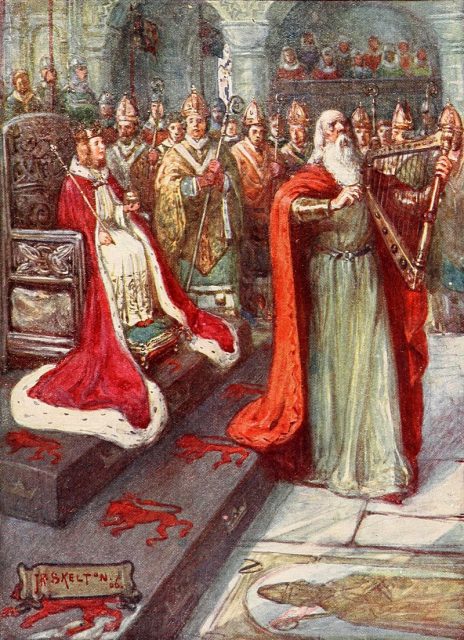
Edward I realized he could take advantage of the situation. As he arranged for Balliol to become King, he also pressured him and other Scottish nobility to acknowledge English hegemony over Scotland based on an old treaty that the Scots had renounced.
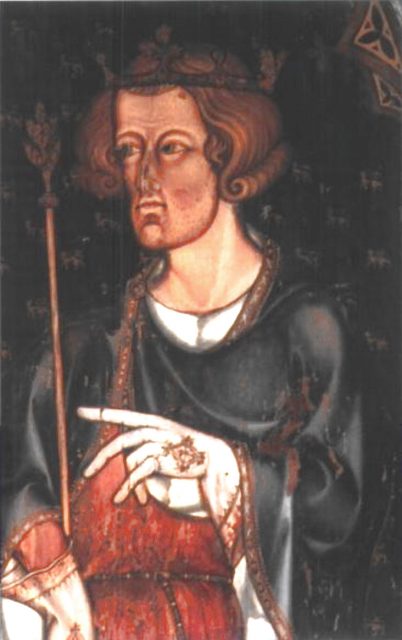
Resistance and Alliance
Many Scottish nobles soon realized that their king was unable to successfully resist English dominance. They knew something had to change, or it was only a matter of time until Scotland was truly just an English vassal state. They knew their only chance was to find a powerful ally.
France and England were already on the brink of war due to a territorial dispute, so the Scottish knew France would be looking for allies. Additionally, King Balliol was a descendant of French nobility, and his family still owned a significant amount of land in France. France certainly would not want their English rivals to grow more powerful by subjugating Scotland, so an alliance between the Scots and French seemed natural.
Balliol’s position was so weak at this point that he had secretly been stripped of his powers by leading Scottish nobles. Those nobles set up a council which reached out to France to form an alliance. England would now have a two-front war on its hands if it attacked Scotland. For his part, Balliol officially renounced his homage to Edward.
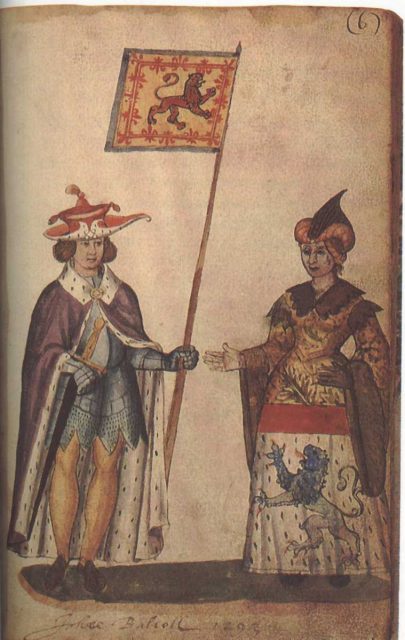
First War of Independence
Edward’s retribution was swift and effective. He sent one of his finest commanders north and crushed the Scottish forces at the Battle of Dunbar. King Balliol soon surrendered. As part of his surrender, Balliol had to renounce the alliance with the French.
However, when William Wallace and Andrew de Moray rose in rebellion against the English a year later, they quickly reached out to France. Unfortunately for the Scottish, the French were less willing to ally themselves with what was technically a rebellion at that point. The French did, however, continue to fight the English on their own soil, which divided the English army.
Even after France made peace with the English, the Scottish were able to successfully rise up under the banner of Robert the Bruce and maintain their freedom. Robert the Bruce renewed the Auld Alliance in 1326 as a precaution against future invasions.
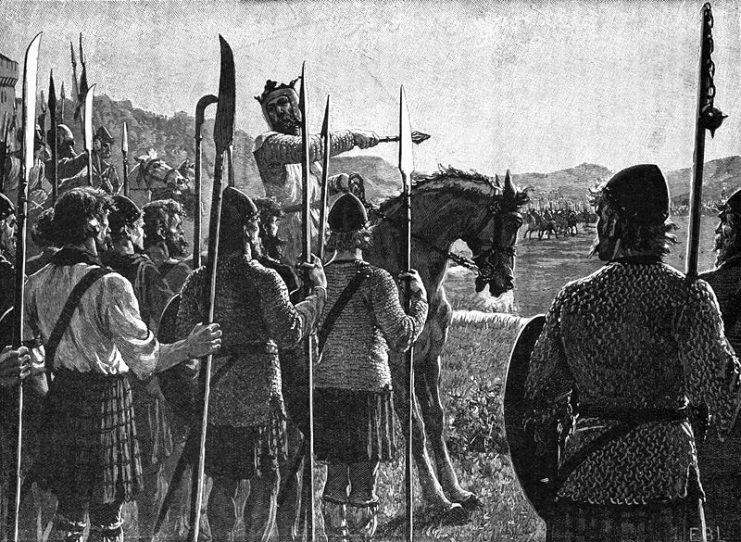
Second War of Independence
Scotland received much more significant help from France during their Second War of Independence. England once again invaded Scotland, and once again experienced early success, taking almost all of the lowlands. The King of Scotland, a young David II, fled to France for safety.
The French demanded a justification for the English invasion of Scotland, and offered to broker a peace treaty. When the English refused, King Philip VI assembled an army to send to Scotland if England did not cease the invasion. England refused again.
In June of 1336, King Philip announced to the English that he was going to make good on his threat. This was the start of the Hundred Years’ War.
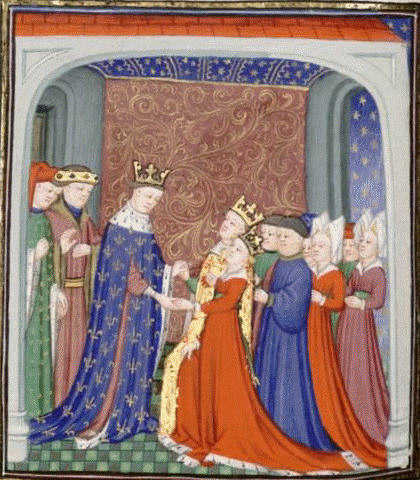
The French had already been providing badly needed supplies to the Scots for months, but this military intervention changed the course of the entire war. Edward did not take the Scots seriously, and so sent nearly his entire army to France.
The Scottish took full advantage of this situation. By the end of the year they had retaken almost all of their land and even raided into northern England.
The war went back and forth in both Scotland and France, with significant destruction on both sides. The Scottish and English eventually made a separate peace in 1357 which maintained Scottish independence. However, the Auld Alliance would meet the English on the field of battle again soon.
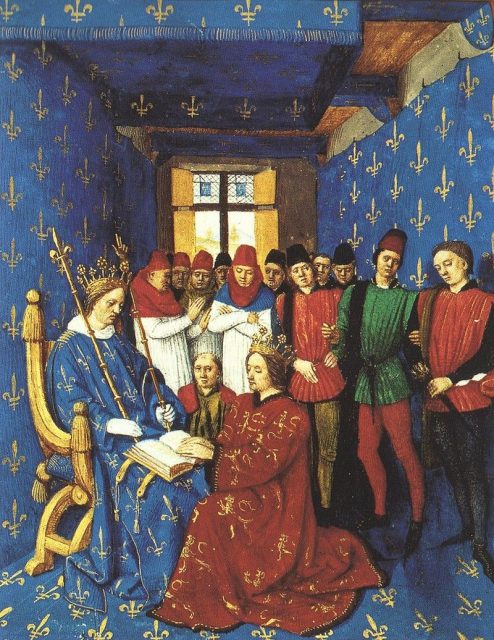
Alliance in Later Years
After the catastrophic French defeat at the battle of Agincourt in 1415, it was Scotland’s turn to come to the rescue. When the French called upon Scotland for help, more than 12,000 Scots boarded ships bound for France.
A largely Scottish force defeated the English in 1421 at the Battle of Bauge, killing the Duke of Clarence in the process. Although the Scottish suffered significant losses in France later, this victory bought the French time to regroup and stabilize their government.
A number of Scotsmen arrived with Joan of Arc when she relieved the city of Orleans, another turning point in the war. A group of Scotsmen even accompanied Joan of Arc as a guard when she entered the city. Ultimately, the Auld Alliance won the war.
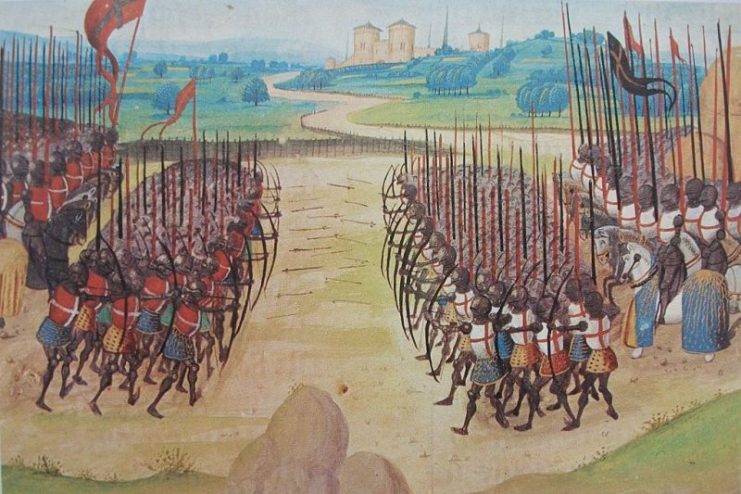
The Auld Alliance later intervened on the Lancasterian side of the Wars of the Roses. France and Scotland saw this English civil war as an opportunity to gain land and destabilize England. Scotland and France both sheltered numerous Lancasterian fugitives and offered them aid in exchange for territory.
However, England eventually regained these territories. Shortly after the war, English King Henry VII married his daughters to the Kings of France and Scotland. The Auld Alliance seemed to be in danger as Scotland grew more politically connected to England.
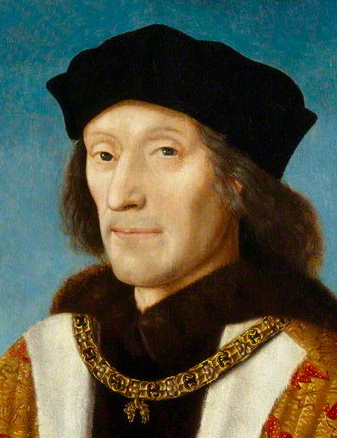
Rough Wooing
Only 10 years after the formation of the Church of England, a new war broke out. The English launched an attack on Scotland to ensure that the pro-English faction in Scottish society dominated the pro-French faction.
The increasing religious unrest in Scotland was one major factor behind this divide. The growing Protestant element of society wanted to ally with England, but the Catholics wanted to maintain the Auld Alliance.
The Rough Wooing was a brutal war in which Scotland’s capital of Edinburgh was burned down and much of the country was occupied. However, with French military, financial, and political assistance, Scotland once again was able to eventually force the English out and maintain independence.
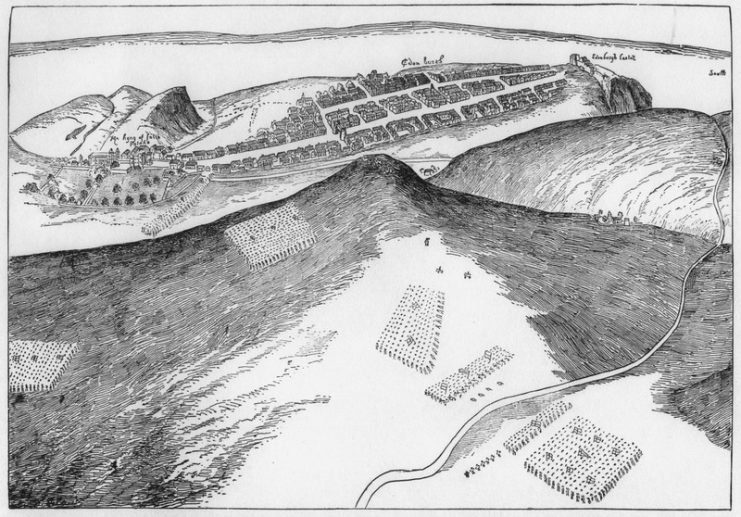
The warm relations between Scotland and France seemed to be renewed when Queen Mary of Scotland married King Francis II of France in 1558. This was despite the fact that Queen Mary had previously been betrothed to the English Prince.
However, the changing religious landscape of Scotland was not easily controlled. As Protestants continued to gain power in Scotland, relations with Catholic France became strained. The English had been steadily gaining power over Scotland through royal marriages and influence on Protestant nobles.
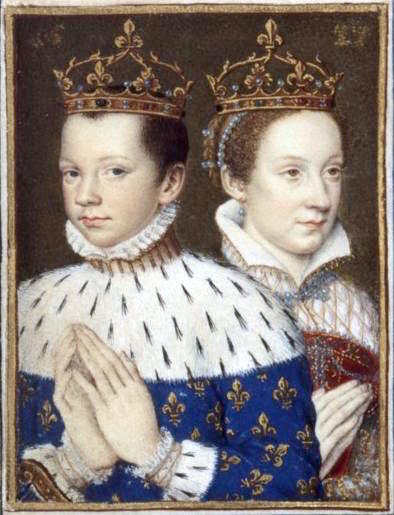
Fall of the Alliance and Legacy
After Mary lost power, James VI, who was also heir to the English throne, became the King of Scotland. The English now had the power they needed to dictate Scottish foreign policy. In 1560, after over 250 years of alliances, the Auld Alliance officially ended with the Treaty of Edinburgh. Scotland had not fallen to invasion, but rather to internal division.
By 1603, the Scottish and English crowns were officially united, and from then on both would always have the same monarch. Finally, the Acts of Union that took effect in 1707 formally made Scotland and England one United Kingdom.
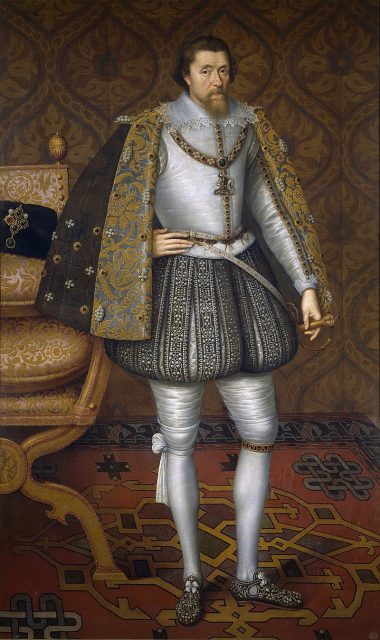
Although most conversations surrounding the alliance focus on its military objectives, its cultural legacy is also significant. The French and Scottish traded extensively as a condition of the alliance—Scottish nobility became famous for their love of French wine—and even gave each other dual citizenship. Many Scots ended up settling in France, often after traveling there as military aid or merchants.
The “Scots Guard” (Garde Écossaise) was formed to protect French monarchs in 1418, and over time helped save several kings’ lives. The Guard existed and maintained the title “The Proud Scots” (les fiers Ecossais) until 1830.
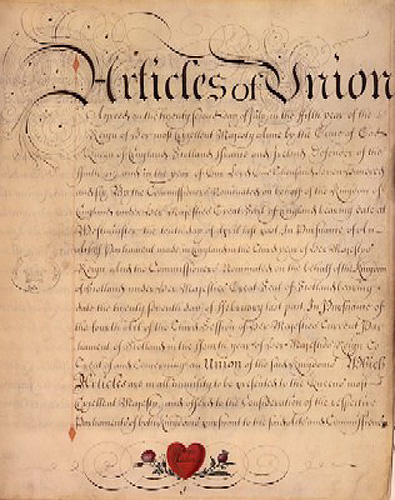
Despite the ultimate failure of the Alliance, its echos can still be heard today. If Scotland had been fully annexed by England in the 1300s, it is entirely possible that Scottish culture would have totally assimilated with it over those hundreds of years.
Much of the uniqueness and vibrancy of modern Scottish culture is indirectly owed to this alliance. Due to its length, cultural impact, and the number of major wars it impacted, the Auld Alliance is certainly one of the most significant alliances in European history.
